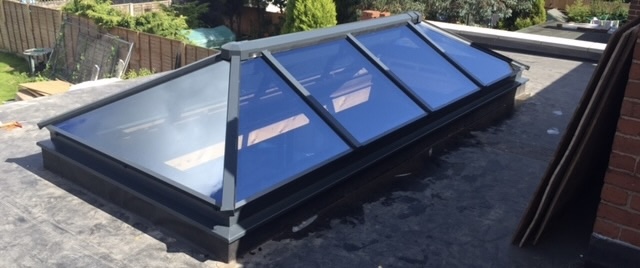During the last couple of years, the focus on homes has been to conserve energy. Glazing is one of the key elements of improvement and today Triple glazing is available with a “U” value of 0.6. This low “U” value means glass roofs are available that don’t lose too much heat. When positioned well they assist in bringing natural light into the darned area of any extension.
Which glass should you use in glass roofs
Glass in homes should at minimum have a soft-coat on the inside pane of glass. There are several different to choose from giving the base sealed unit a “U” value of 1.2 down to the best energy double-glazed units having a “U” value of 1.0. Triple-glazing can get down to 0.5 “U” value depending on the make up of the sealed unit. The “U” value will conserve energy and the lower the “U” value the better for insulation.
Direction of glazed windows and doors
North and East facing glazed products are best glazed with a good low “U” value this will keep the property warm in the winter but it will do nothing to reflect the heat from the Sun in the summer. This is generally accepted for North and East facing glazed-areas.
South and West facing glass roofs are best with a solar reflective glazing. For many years it was considered that tinted glass would do this in fact Pilkington called there tinted glass anti-sun which we know helps but does not do a good job at keeping the heat of the sun out. To keep homes cool we need to use a solar reflective glass like Guardian SunGuard SN 70/35 or St Gobain Cool-lite SKN 176 11 both of these will reflect 65% of the suns heat away from the glass keeping the home cooler in the heat of the day. This glass is used with the soft-coat glazing on the inside which will keep the property warm in the winter. You can keep the home cooler in the summer and warmer in the winter simply by choosing the correct glass.
Safety glass roofs
Building control has required safety glazing in doors and areas of concern for many years. We will always make sure you have the correct safety glazing in any product supplied by us as long as we are given the details about location and site conditions. Toughened glass is the most commonly used safety glass and is super strong. Being a manufactured product there can be small imperfections in glass these are controlled by strict rules during manufacture but it has to be understood that some small imperfections in glass do occur and again there are guidelines on what is acceptable and what is not. More details >>
Contemporary lantern roofs and roof lights
Contemporary lantern roofs and roof lights have minimal roof bars and maximum glazing. The only restriction is the size and weight of the glass roof. The glazing should be solar reflective to keep the kitchen below comfortable and cooler. Guardian SunGuard SN 70/35 will reflect 65 percent of the solar heat from the sun. Lantern and flat glass roofs are better with easy clean glazing which provided they get the ultra violet light from the sun and also rain will keep the glass on the roof cleaner without having to get on the roof.
Traditional lantern glass roofs
Traditional lantern roofs can are bigger than the contemporary lantern roofs because they tend to have more glazing bars making the glazing smaller and not so heavy. Building a large lantern roof you need to make sure that the roof is strong enough to support the weight.

